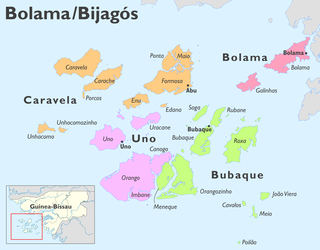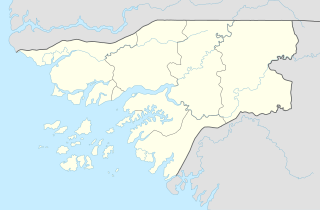
Guinea-Bissau, officially the Republic of Guinea-Bissau, is a country in West Africa that covers 36,125 square kilometres (13,948 sq mi) with an estimated population of 1,815,698.
Guinea-Bissau was dominated by Portugal from the 1450s to the 1970s; since independence, the country has been primarily controlled by a single-party system.

Guinea-Bissau is among the world's least developed nations and one of the 10 poorest countries in the world, and depends mainly on agriculture and fishing. Cashew crops have increased remarkably in recent years, and the country now ranks sixth in cashew production.

The Revolutionary Armed Forces of the People or FARP are the national military of Guinea-Bissau. They consist of an Army, Navy, Air Force and paramilitary forces. A 2008 United Nations Development Programme census estimated that there were around 4,000 personnel in the Armed Forces. An earlier CIA World Fact Book figure was 9,250. The World Fact Book also estimated military expenditure as $9.46 million, and military spending as a percentage of GDP as 3.1%.

Bissau is the capital city of the African Republic of Guinea-Bissau. In 2015, Bissau had a population of 492,004. Bissau is located on the Geba River estuary, off the Atlantic Ocean, and is Guinea-Bissau's largest city, major port, and its administrative and military centre.
The music of Guinea-Bissau is most widely associated with the polyrhythmic genre of gumbe, the country's primary musical export. Tina and tinga are other popular genres.
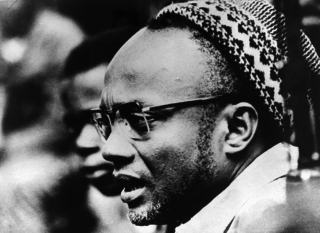
This name uses Portuguese naming customs. The first or maternal family name is da Costa and the second or maternal family name is Cabral.

Portuguese Guinea, called the Overseas Province of Guinea from 1951, was a West African colony of Portugal from the late 15th century until 10 September 1974, when it gained independence as Guinea-Bissau.
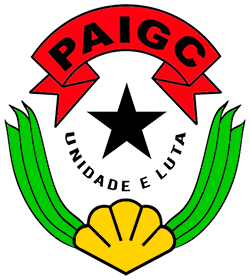
The African Party for the Independence of Guinea and Cape Verde is a political party in Guinea-Bissau. Originally formed to peacefully campaign for independence from Portugal, the party turned to armed conflict in the 1960s and was one of the belligerents in the Guinea-Bissau War of Independence. Towards the end of the war, the party established a Marxist–Leninist one-party state, which remained intact until multi-party democracy was introduced in the early 1990s. Although the party won the first multi-party elections in 1994, it was removed from power in the 1999–2000 elections. However, it returned to office after winning parliamentary elections in 2004 and presidential elections in 2005, since which it has remained the largest party in the National People's Assembly.

The Guinea-Bissau War of Independence was an armed independence conflict that took place in Portuguese Guinea between 1963 and 1974. Fought between Portugal and the African Party for the Independence of Guinea and Cape Verde, an armed independence movement backed by Cuba and the Soviet Union, the war is commonly referred to as "Portugal's Vietnam" due to the large numbers of men and amounts of material expended in a long, mostly guerrilla war and the internal political turmoil it created in Portugal. The war ended when Portugal, after the Carnation Revolution of 1974, granted independence to Guinea-Bissau, followed by Cape Verde a year later.
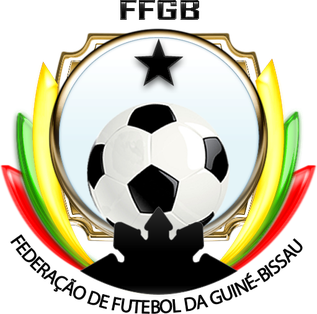
The Guinea-Bissau national football team is the national team of Guinea-Bissau and is controlled by the Football Federation of Guinea-Bissau. They are a member of the Confederation of African Football (CAF).
Cape Verdean Guinea-Bissauan are Guinea-Bissauan residents whose ancestry originated in Cape Verde.

Guinea-Bissau–United States relations are bilateral relations between Guinea-Bissau and the United States.

Republic of Guinea-Bissau passports are issued to citizens of Guinea-Bissau to travel outside the country. Guinea-Bissau citizens can travel to member states of the Economic Community of West African States (ECOWAS) without a passport.
This name uses Portuguese naming customs: the first or maternal family name is Djaló and the second or paternal family name is Nandigna.
The WHO's estimate of life expectancy for a female child born in Guinea-Bissau in 2008 was 49 years, and 47 years for a boy. in 2016 life expectancy had improved to 58 for men and 61 for women.
Prostitution in Guinea-Bissau is common and there are no prostitution laws. In 2016 it was estimated there were 3,138 prostitutes in the country. Often it is associated with other crimes: Many pimps are also reported to be drug dealers. Poverty leads many women to be tempted into prostitution and cocaine addiction.


